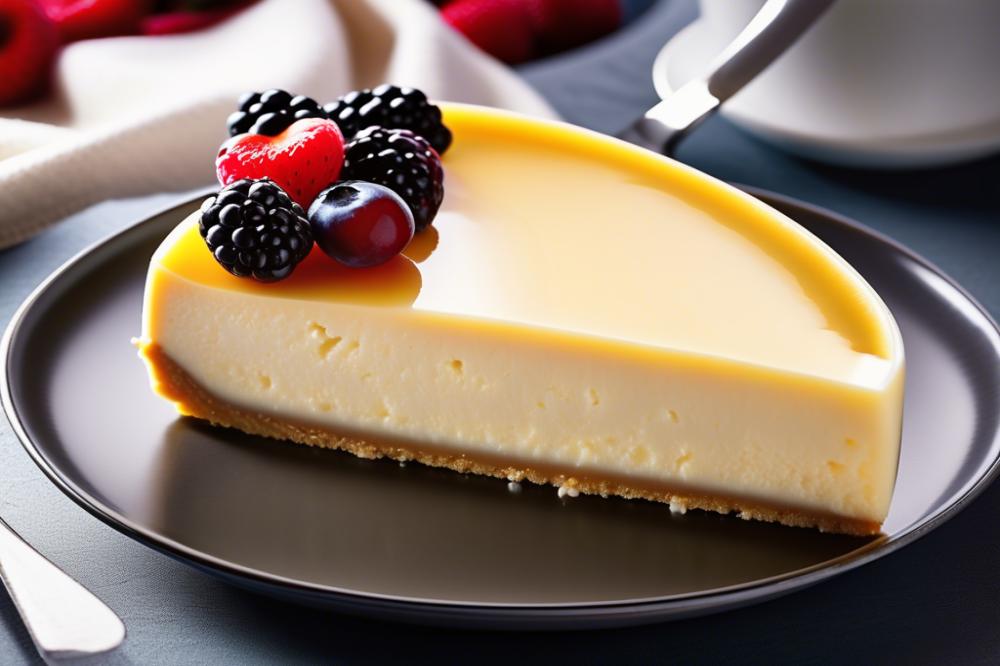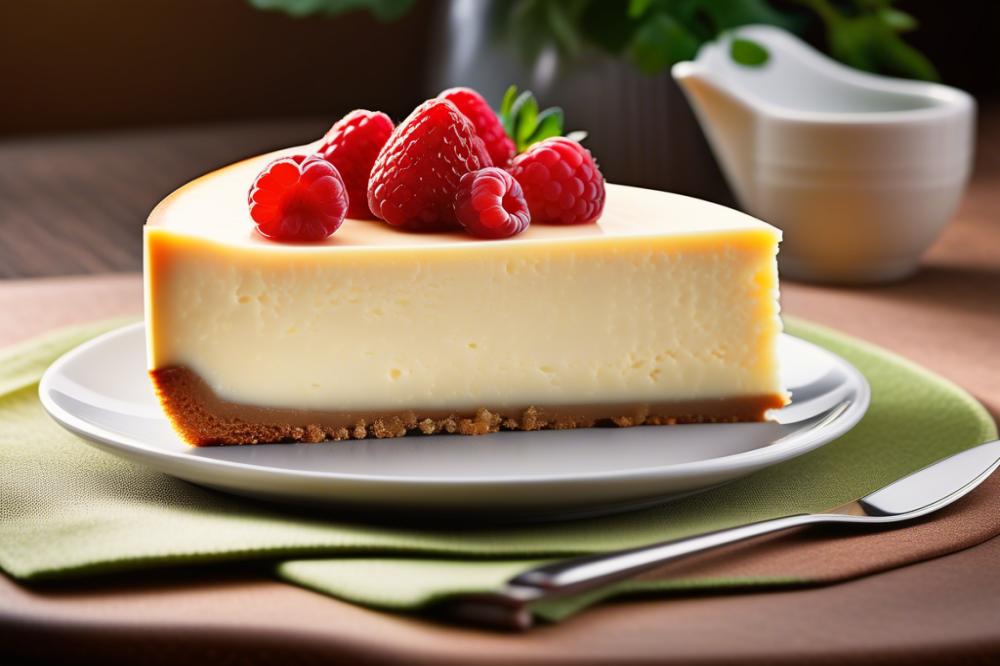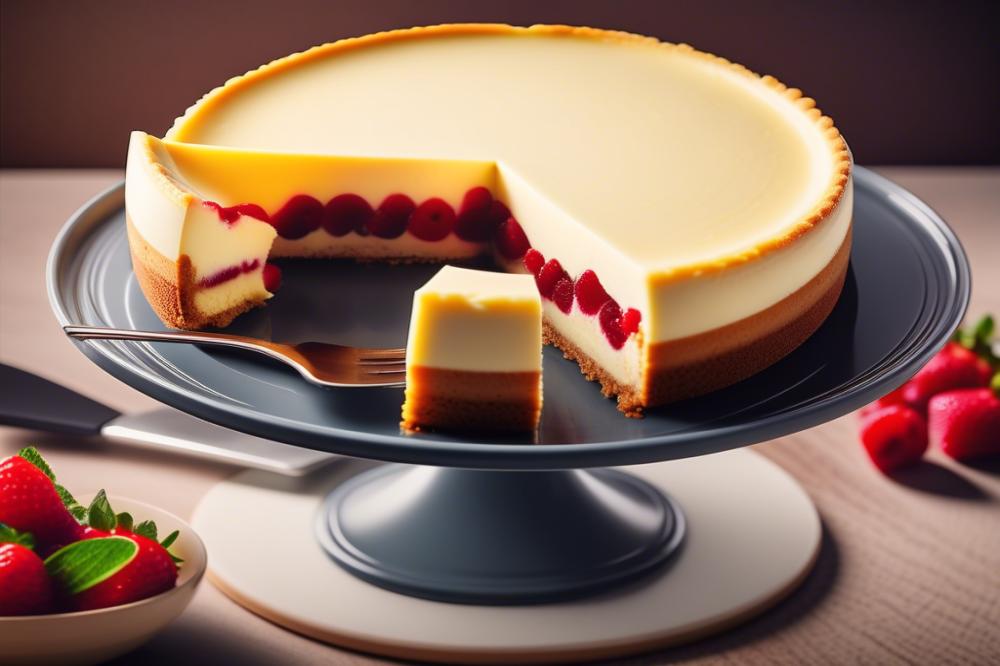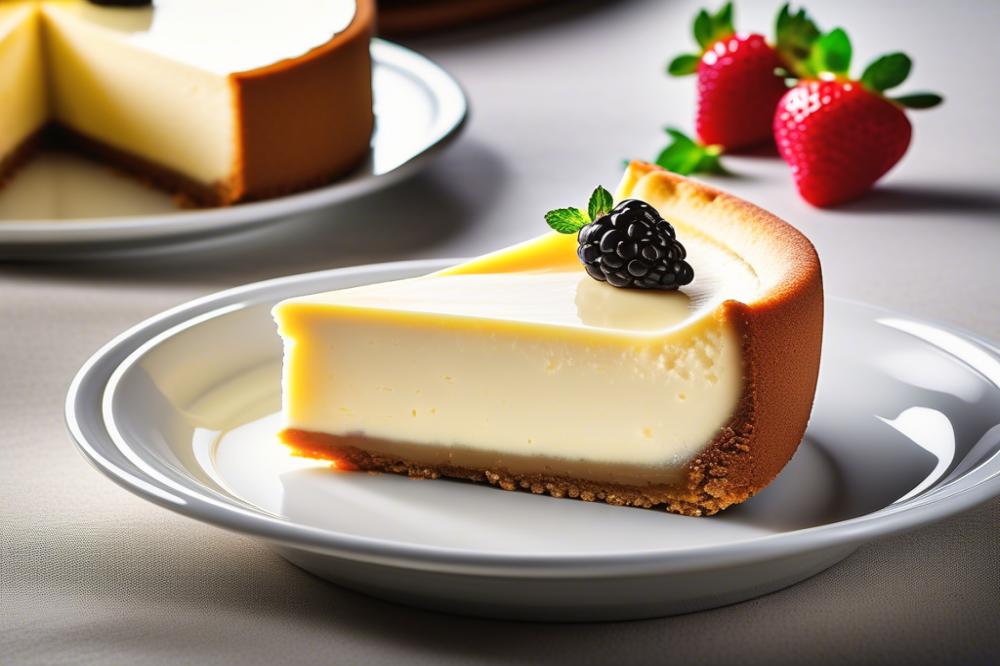Introduction
Cheesecake holds a special place in the pantheon of desserts. Its creamy texture and rich flavor entice palates worldwide. Many enjoy the satisfying contrast between the velvety filling and the crumbly crust. Local variations abound, reflecting diverse cultural influences. Yet, nothing quite compares to the experience of making this beloved dessert from scratch.
Crafting a cheesecake at home allows for greater control over ingredients and customization. It enables bakers to avoid additives often found in store-bought versions. These elements can sometimes detract from flavor and quality. The act of preparing your dessert becomes a labor of love, fostering a sense of pride in the final product.
Homemade desserts bring several benefits beyond just taste. They offer a sense of accomplishment, enhancing one’s cooking skills. Additionally, sharing personal creations with friends and family fosters connections. The joy of gifting a handmade cheesecake transcends the act of providing a sweet treat.
Choosing to create a cheesecake from scratch also encourages creativity. You can experiment with flavors and toppings, transforming a Classic Cheesecake into a personalized masterpiece. A simple, tried-and-true Cheesecake Recipe can serve as a canvas for innovation, inviting bakers to express themselves.
Classic Cheesecake

Ingredients Required for the Cheesecake
To create a rich and creamy cheesecake, gather the following ingredients:
- 2 cups of graham cracker crumbs
- 1/2 cup unsalted butter, melted
- 1 cup granulated sugar
- 4 packages (8 ounces each) cream cheese, softened
- 1 teaspoon vanilla extract
- 4 large eggs
- 1/3 cup sour cream
- 1 tablespoon all-purpose flour
- Optional: Fresh fruit or chocolate for topping
Tools Needed for Preparation
Gathering your tools ahead of time will streamline the process:
- 9-inch springform pan
- Mixing bowls
- Electric mixer or whisk
- Rubber spatula
- Measuring cups and spoons
- Aluminum foil
- Baking sheet
Step-by-Step Instructions for Preparing and Baking the Cheesecake
Follow these detailed instructions to create a delicious cheesecake:
- Preheat your oven to 325°F (163°C).
- Combine graham cracker crumbs and melted butter in a bowl. Stir until well mixed.
- Press the crumb mixture firmly into the bottom of the springform pan. Create an even layer.
- In another bowl, blend the softened cream cheese and sugar until smooth. Incorporate the vanilla extract.
- Add the eggs one at a time. Mix each until just combined.
- Gently fold in the sour cream and flour, ensuring no lumps remain.
- Pour the cream cheese mixture over the prepared crust. Smooth the top with a spatula.
- Wrap the bottom of the pan with aluminum foil. This prevents water from entering during baking.
- Place the pan in a larger baking sheet filled with water. This creates a water bath, helping the cheesecake bake evenly.
- Bake for 50-60 minutes. The center should be slightly jiggly; it will firm up as it cools.
- Turn off the oven and crack the door, letting the cheesecake sit for an hour.
- Remove it from the oven and refrigerate for at least four hours before serving.
Tips for Achieving the Perfect Texture
Achieving the right texture may require attention to detail:
- Room temperature ingredients yield a smoother batter. Set eggs and cream cheese out ahead of time.
- Overmixing can incorporate too much air, resulting in cracks. Mix just until combined.
- Utilizing a water bath is essential for even baking and prevents dryness.
- Cooling gradually in the oven will help reduce the risk of surface cracks.
- Chilling overnight allows flavors to meld and creates a firmer texture.
Nutritional Information

When considering homemade cheesecake, understanding its nutritional profile becomes essential. A standard slice typically contains around 250 to 400 calories, depending on specific ingredients and portion size. The macro breakdown generally consists of about 20 to 30 grams of fat, 20 to 30 grams of carbohydrates, and 5 to 10 grams of protein.
Cheesecake provides several vitamins and minerals. It is a good source of calcium thanks to the cream cheese, which supports bone health. Phosphorus, another important mineral, is also present, aiding in the formation of bones and teeth. Additionally, cheesecake contains small quantities of vitamins A and B12, which are crucial for overall bodily functions.
When comparing homemade versions with store-bought alternatives, there are notable differences. Store-bought cheesecakes often contain preservatives and artificial flavors to enhance shelf life and taste. Consequently, the ingredient quality can significantly affect both flavor and nutritional content. Homemade options usually forego these additives, offering a cleaner ingredient list.
Store brands may vary in calorie density too. Some may pack in more sugar and fat than a homemade recipe would typically incorporate. This excess can lead to higher calorie counts per slice, often reaching upwards of 500 calories in commercial versions. In terms of macros, their protein content may be lower, given the different types of cheese and fillers used.
Homemade cheesecakes can be tailored to individual dietary preferences. Substituting lighter cream cheese or Greek yogurt can decrease fat without sacrificing flavor. The sweetness can also be adjusted, allowing for a reduction of added sugars compared to pre-made versions. Therefore, making cheesecake from scratch not only helps control ingredients but also provides an opportunity to create a dessert that aligns more closely with personal health goals.
Health Benefits

Nutritional advantages of key ingredients
Cream cheese serves as the base for many cheesecakes, providing a source of calcium and protein. This dairy product contributes essential nutrients important for bone health. Eggs, another primary ingredient, are high in protein and contain vital amino acids. Additionally, they provide choline, which supports brain function. Sugar, while often seen as a negative, can offer a quick energy boost.
The crust, typically made from graham crackers, contains carbohydrates. Whole grain alternatives can enhance fiber content, supporting digestive health. Various recipes allow for the inclusion of healthy fats, such as those found in nuts used for crusts. Furthermore, adding fruit toppings increases vitamin C intake and adds natural sweetness without unnecessary additives.
Potential benefits of moderation in desserts
Desserts, when enjoyed in moderation, can be part of a balanced diet. Occasional indulgence helps satisfy cravings, reducing the likelihood of overindulgence later on. Mindful eating practices can make each bite more enjoyable. Cheesecake, rich and satisfying, can be savored without guilt if portion sizes are controlled.
Research indicates that satisfying a sweet tooth can contribute to improved mood. Enjoying desserts occasionally fosters a healthier relationship with food. Happiness can stem from the simple pleasure of a well-made treat. The key lies in balancing these treats with nutritious meals.
Ways to enhance healthiness of cheesecake
Substituting ingredients can greatly impact the nutritional profile of your dessert. For instance, using reduced-fat cream cheese can lower calories while maintaining flavor. Sweeteners like honey or maple syrup can replace refined sugar, offering a more natural option.
Incorporating Greek yogurt into the recipe can boost protein content and creaminess without the added fat. Adding fruits such as blueberries or strawberries not only enhances flavor but also packs more nutrients. Herbs like mint can offer a unique twist, enhancing both taste and presentation.
For those looking to reduce refined carbs, consider a nut-based crust or a crust made from oats. These alternatives add texture while also increasing fiber. Small changes can make a significant difference in healthfulness. Enjoying a classic recipe doesn’t mean sacrificing nutrition.
Wrapping Up Your Cheesecake Journey
To recap, crafting a classic cheesecake from scratch is an endeavor that blends simplicity with rewarding results. A buttery crust provides the perfect balance to the rich filling, made predominantly of cream cheese, eggs, and sugar. Baking might require patience, but the end product is well worth the wait. Refrigerating the dessert for several hours allows it to set properly and develop its flavors.
Don’t hesitate to infuse your personality into the recipe. Experimenting with different flavorings such as vanilla, lemon, or chocolate can yield various delightful results. Adding toppings like fresh fruits, chocolate ganache, or caramel can transform the standard dish into something truly memorable. Each variation offers a new taste experience; discover what resonates best with your palate.
Finally, invite friends and family to share in this delightful process. Your baking journey creates an opportunity to exchange ideas and variations. Document your trials and triumphs, and don’t forget to share them with others. Your insights could inspire someone else to embark on their own cheesecake adventure. Embrace the creativity inherent in dessert-making, and enjoy every bite.



